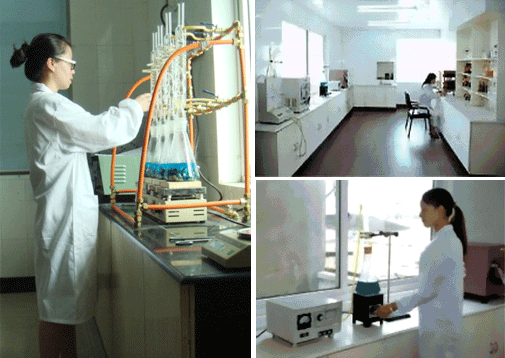
Intergranular corrosion (IGC), also known as intergranular attack (IGA), is a form of corrosion where the boundaries of crystallites of the material are more susceptible to corrosion than their insides.
This situation can happen in otherwise corrosion-resistant alloys, when the grain boundaries are depleted, known as grain boundary depletion, of the corrosion-inhibiting elements such as chromium by some mechanism. In nickel alloys and austenitic stainless steels, where chromium is added for corrosion resistance, the mechanism involved is precipitation of chromium carbide at the grain boundaries, resulting in the formation chromium-depleted zones adjacent to the grain boundaries (this process is calledsensitization). Around 12% chromium is minimally required to ensure passivation, mechanism by which an ultra thin invisible film, known as passive film, forms on the surface of stainless steels. This passive film protects the metal from corrosive environments. The self-healing property of the passive film make the steel stainless.Selective leaching often involve grain boundary depletion mechanisms.
Oxalic Acid Test, ASTM A262, Practice A (Oxalic Acid Etch)
The oxalic acid etch test is a rapid method of screening those specimens of certain stainless steel grades which are essentially free of susceptibility to inter granular attack associated with chromium carbide participates. The test is used for acceptance but not rejection of material.
Ferric Sulfate - Sulfuric Acid, ASTM A262 - Practice B (Streicher Test)
This test is based on weight loss determinations and provides a quantitative measure of the relative performance of the material evaluated. The procedure includes subjecting a specimen to a 24 to 120 hour boil in ferric sulfate - 50% sulfuric acid. This procedure measures the susceptibility of stainless steels and nickel alloys to inter granular attack associated with the precipitation of chromium carbides at grain boundaries.
Nitric Acid, ASTM A262, Practice C, (Huey Test)
The specimens are boiled for five periods, each of 48 hours, in a 65 per cent solution of nitric acid. The corrosion rate during each boiling period is calculated from the decrease in the weight of the specimens. Properly interpreted, the results can reveal whether or not the steel has been heat-treated in the correct manner. The customer must specify the maximum permissible corrosion rate and, in applicable cases, data on sensibilizing heat treatment.
The Huey test environment is strongly oxidizing, and, is only used as a check on whether the material has been correctly heat treated. This test is suitable for the detection of chromium depleted regions as well as intermetallic precipitations, like sigma phase, in the material. The Huey test is also used for materials that come into contact with strongly oxidising agents, e.g. nitric acid. This procedure may also be used to check the effectiveness of stabilizing elements and of reductions in carbon content in reducing susceptibility to inter granular attack in chromium-nickel stainless steels.
Copper - Copper Sulfate - 16% sulfuric acid, ASTM A262 - Practice E (Strauss Test)
This procedure is conducted to determine the susceptibility of austenitic stainless steel to inter granular attack associated with the precipitation of chromium-rich carbides. Once the specimen has been subjected to the solution boil, it is bent through 180¡ã and over a diameter equal to the thickness of the specimen being bent. This test is based on a visual examination of the bent specimen.
Copper - Copper Sulfate - 50% sulfuric acid, ASTM A262 - Practice F
This test is based on weight loss determination which provides a quantitative measure of the relative performance of the material evaluated. It measures the susceptibility of "as received" stainless steels to inter granular attack.
Lord Steel Industry Company Limited
Many Solutions, One Decision Here... |




